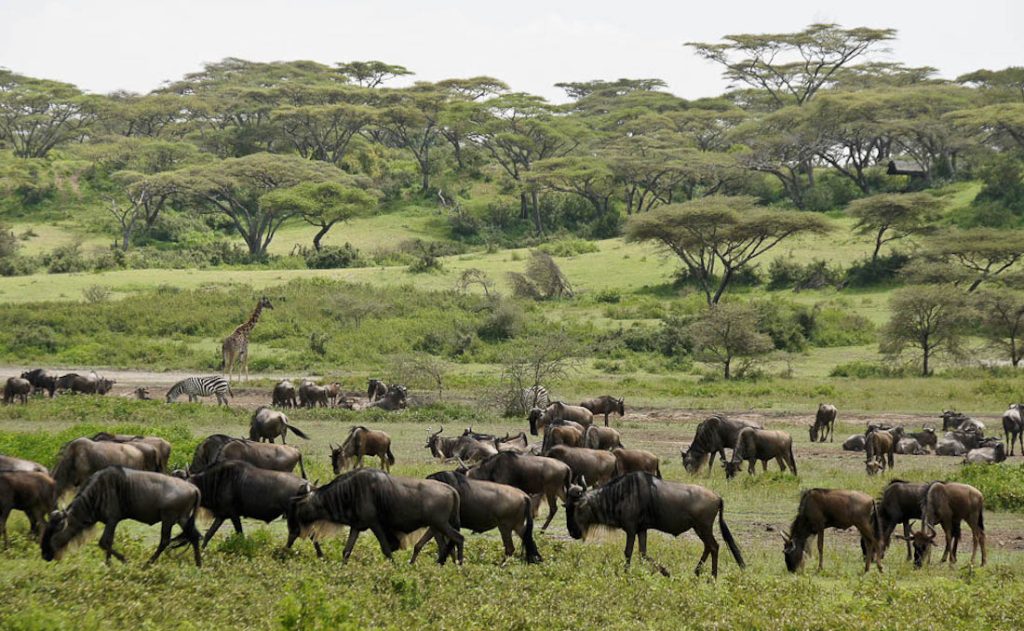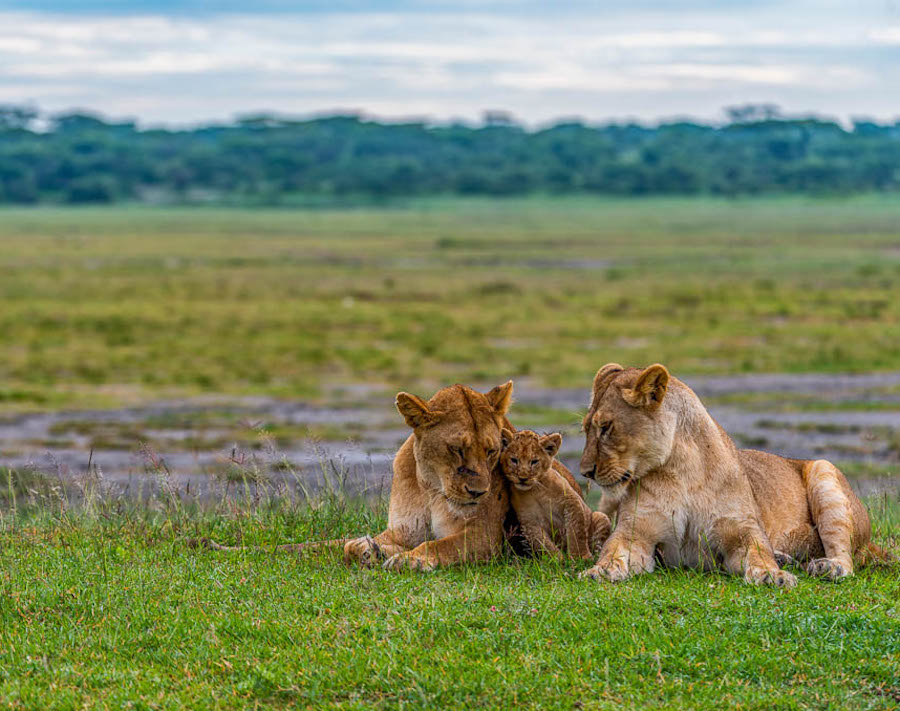The best time for a safari to Tanzania normally depends on your destination and the activities that you plan on engaging in. Wildlife viewing in Tanzania is determined by the two seasons that is the wet and dry seasons which are experienced in the country. If this is your time, we suggest that you try the dry season first which is also the peak season and this is because the wildlife is easy to spot during the dry season as compared to the wet/low season. The first thing you need to know about visiting Tanzania whether it is your first time or not is to first find out the difference between the dry/peak or wet/low seasons.
The best time to visit Tanzania for safari is July to September. This is during the dry season because it is easier to spot the wildlife as compared to the wet season which is experienced from November to December and March to May with April having the long rains. The months of January to February are also great for safari because they are also dry seasons in Tanzania and East Africa at large.
The wildebeest migration in Serengeti is the main tourist attraction in Tanzania and many tourists flock to the country to get a glimpse of the annual migration. The best time is from July to September as they cross the crocodile-infested Rivers from Serengeti to Masai Mara in Kenya. The time that you should avoid are March and April but if you can brave the rains, you still can have the best safari, especially for birders.
The dry/peak VS the wet/low season
The dry season-June to October is characterized by cool, dry weather, it is crowded with high rates (almost doubled or tripled), has a lot of calves around with lots of safari activities that are carried out like game drives, boat rides, horse riding, guided nature walks, hiking, hot air balloon rides, and birding among others.
The wet season-March to May and November to December is the best time for tourists to go for birding, characterized by low rates, occasionally wet, and few tourists, best time for a photo safari because of the greenery which is not seen during the dry season and you do not need to book in advance for the wet season.
Traveling to Tanzania month by month
January to March
January and February are one of the best months for visiting Tanzania, especially the coast. It is also the calving season for wildebeest migration and the best time to explore the coastal towns of Zanzibar. It is the calving season on the Ndutu plains making it a great time to see the calves as they take their first steps.
March is both the end of the short dry season and the beginning of the wet season. The early weeks of February mark the end of the dry season and not long after, the long rains period starts. The rains are not as heavy as they are in April and you can still carry out lots of safari activities like hiking, game drives, and birding.
April to May
April is considered to be the wettest month in Tanzania and although it does not rain the whole day, the rains come in heavy and if possible, April should be avoided as a travel month. The showers can come in at any time of the day including night hours therefore you should be ready at all times for the changing weather. Tourists planning on traveling during this period get the best deals because accommodation costs are reduced during this period.
May is still a wet month however the showers are not as heavy as they are in April. Many parts of the country start drying up during May as the dry season sets in June. This is also the period when the Great Wildebeest migration can be seen from Southern Serengeti to the western corridor.
June to August (peak season)
June is the start of the dry season, also known as the peak season, considered the best time for visiting Tanzania. June sees the rains coming to an end and the start of the large crowds gathering as they prepare to cross the Grumeti River which is crocodile infested (that is the crossings are referred to as death-defying because not all of them will cross due to the crocodiles and sometimes swept away by the water. )
July is a good time for traveling to Tanzania because it is easy to spot the wildlife during this period and the weather is favorable. In this month, the Great wildebeest migration will have reached the northern part of Serengeti preparing to cross the Mara River.
August is the peak season for visiting Tanzania, especially the northern circuit where many National Parks can be found like Ngorongoro crater, Tarangire, and Serengeti National Park. It is peak season because many tourists travel to Tanzania to witness the wildebeest migration crossing the Mara River into Masai Mara in Kenya. Note that the cost of a safari in Tanzania during this period is doubled and you have to be ready for the increased price.
September and October
 September brings the shadow season which is neither the wet nor dry season and during this period, the crowds have started reducing with light showers announcing the start of the second short rainy season. This is the best time to start hiking safaris, especially climbing up the Kilimanjaro ranges. It is also still a good time to go for game drives since the wildlife can still be spotted easily. September is also the best time to go fishing in Tanzania.
September brings the shadow season which is neither the wet nor dry season and during this period, the crowds have started reducing with light showers announcing the start of the second short rainy season. This is the best time to start hiking safaris, especially climbing up the Kilimanjaro ranges. It is also still a good time to go for game drives since the wildlife can still be spotted easily. September is also the best time to go fishing in Tanzania.
October is the beginning of the wet season with short rains and a few thunderous clouds seen. This is the best time to go chimpanzee trekking, take a hike up Mount Meru and also explore Lake Tanganyika. The rains won’t be heavy in October and it will mostly be a warm and sunny month throughout your safari.
November to December
November is the wet month in Tanzania with light and heavy drizzles. It is a good month to visit the off-beat safari destinations in the country and although you won’t be able to see most of the animals, it still is a good time to go for a game drive. It is also a good time to go bird watching and tourists on a low budget.
December is part of the months in the short rainy season and is the best for watching the migratory birds and game drives around the different National Parks and remember that December comes with the Christmas festivals and you need to book in advance since it is a busy season. This is also the time when the Great annual migration has returned to Serengeti and it is a breeding season so expect to see a lot of lots of expectant wildlife before the calving season. The calving season is one of the best time to go on a Tanzania safari but you will enjoy more if you have a long safari in order to set aside at least 3 nights for Ndutu Plains.
Find out the different activities and destinations that interest you and get in touch with us to help you properly plan for your safari to Tanzania.
